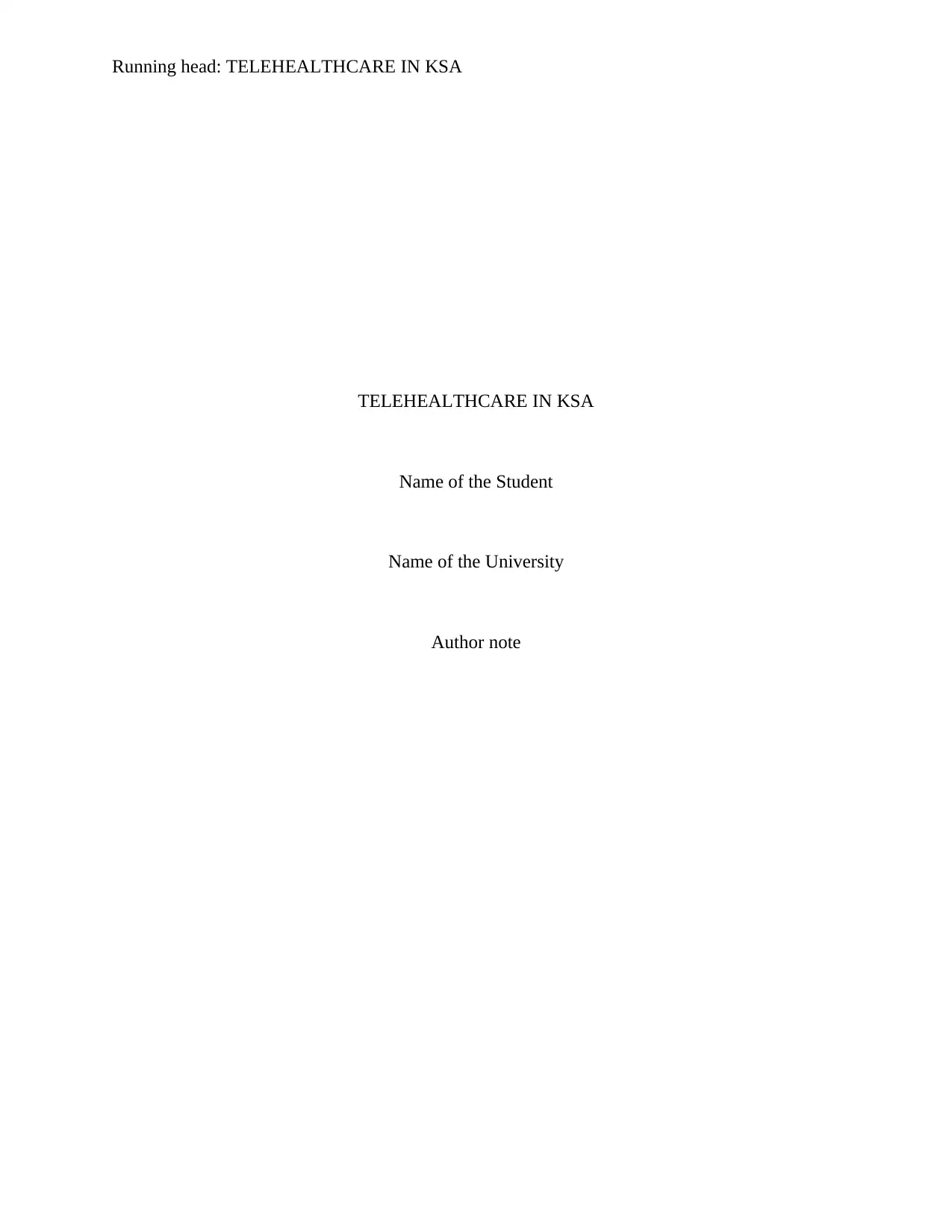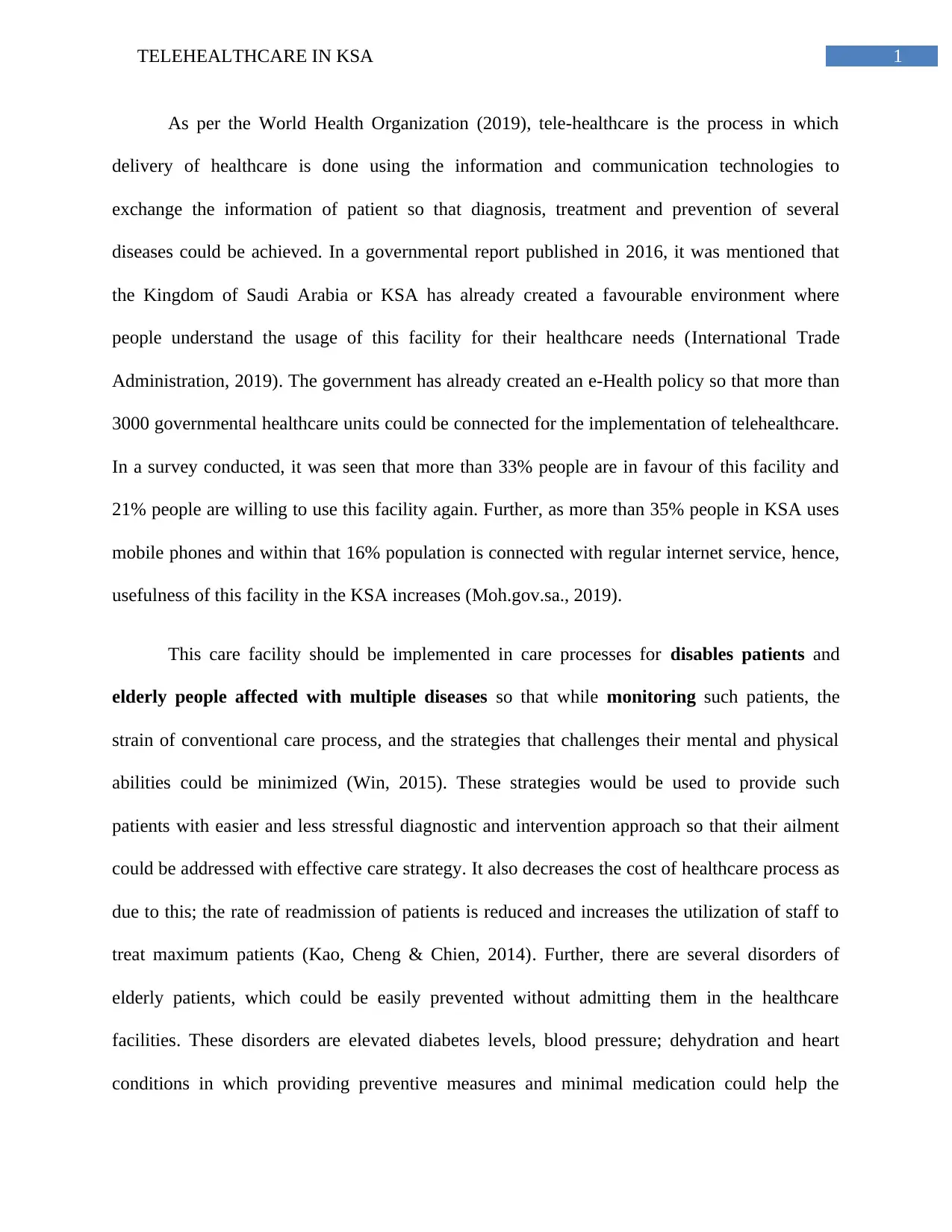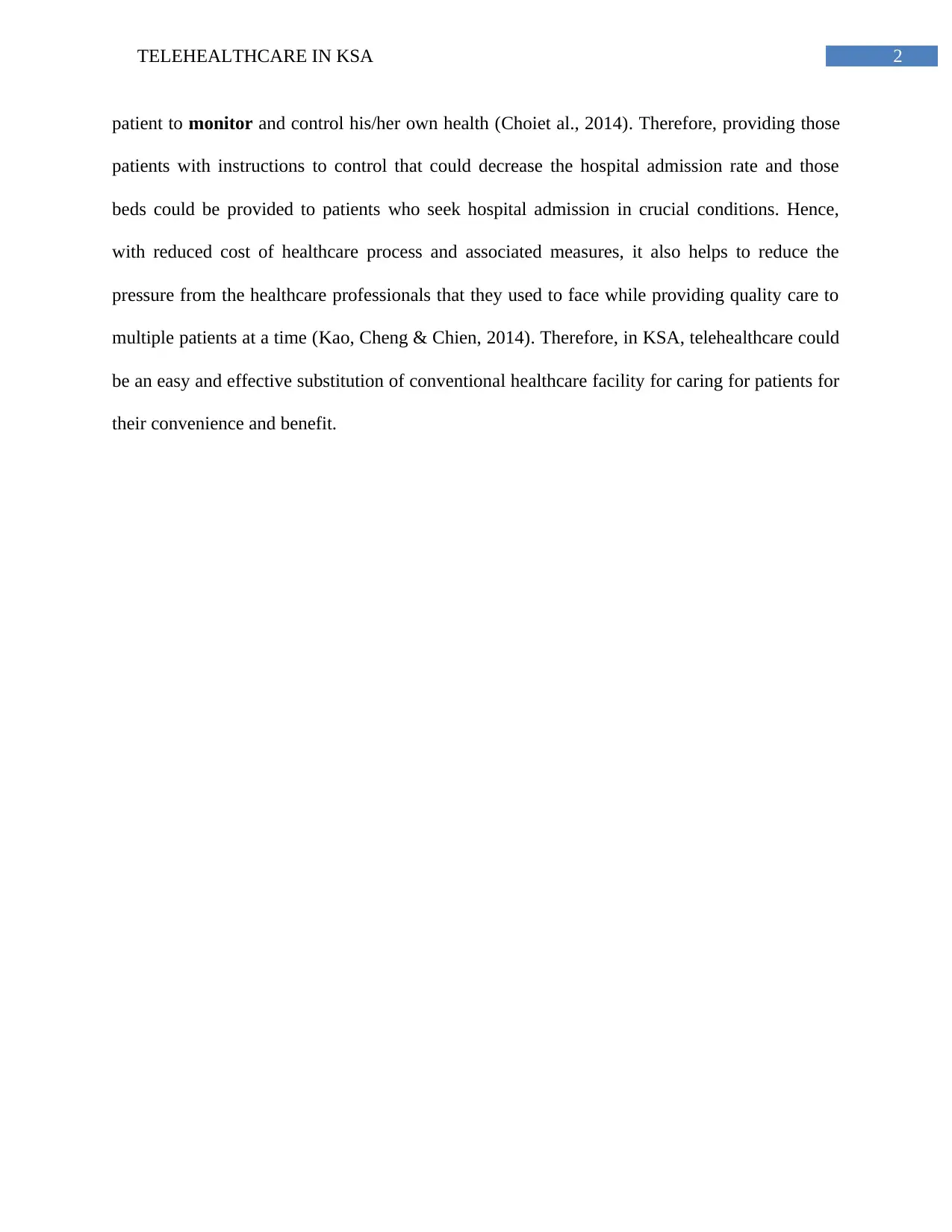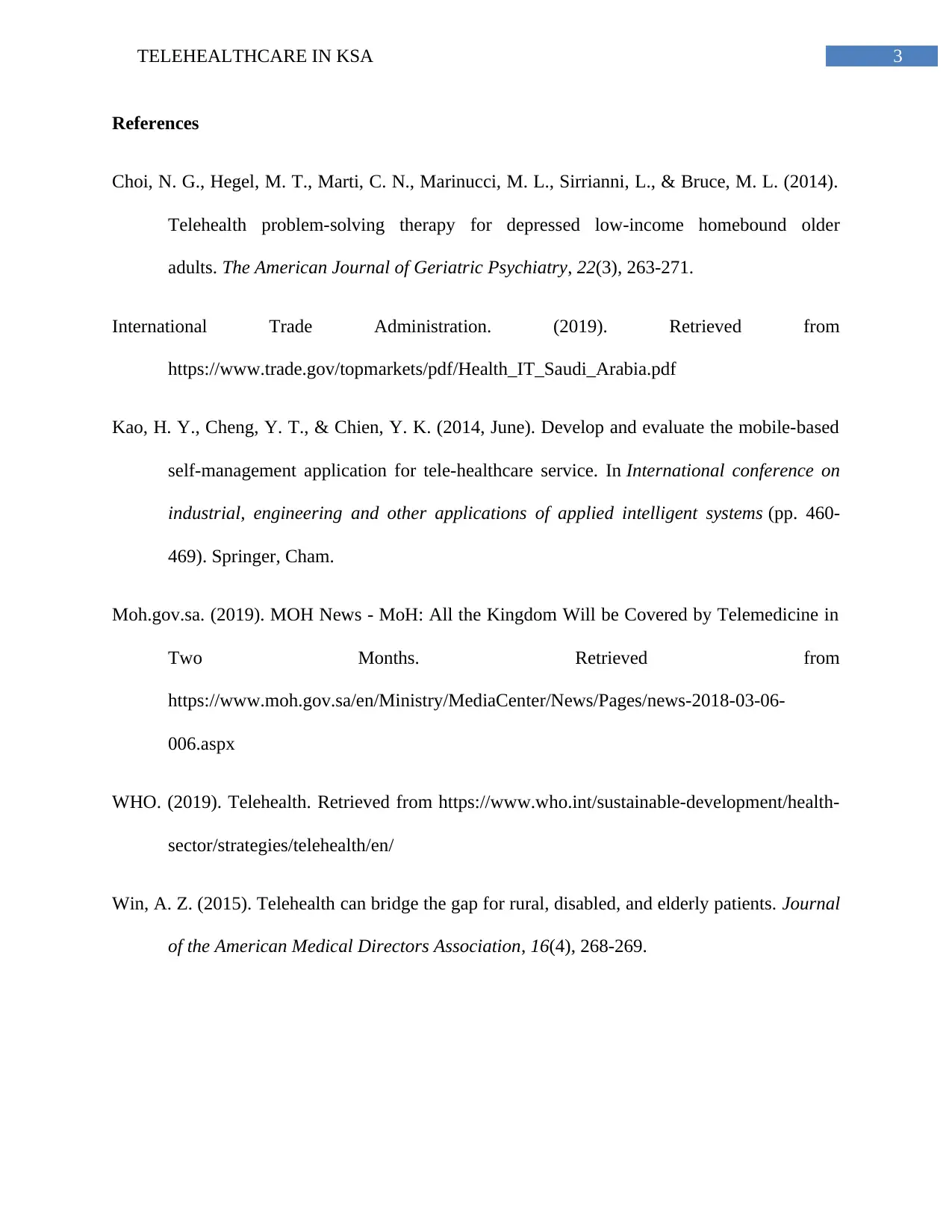Telehealthcare in KSA: Benefits, Challenges, and Future Scope
VerifiedAdded on 2023/04/23
|4
|721
|194
Report
AI Summary
This report provides an overview of telehealthcare in the Kingdom of Saudi Arabia (KSA), highlighting its implementation and benefits within the healthcare system. It references the World Health Organization's definition of tele-healthcare and discusses the KSA government's e-Health policy, which aims to connect numerous healthcare units. The report emphasizes the increasing adoption of mobile phones and internet usage in KSA, making telehealthcare a viable solution. It focuses on the advantages of telehealthcare for disabled patients and elderly individuals with multiple diseases, suggesting that it can reduce the strain of conventional care, minimize healthcare costs, and prevent certain health disorders. The report references various studies and governmental reports to support its arguments, concluding that telehealthcare offers a convenient and effective alternative to traditional healthcare in KSA.
1 out of 4










![[object Object]](/_next/static/media/star-bottom.7253800d.svg)